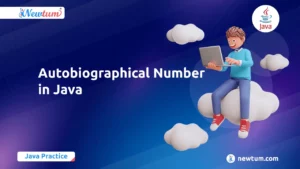Are you curious about how computers make decisions? In our coding journey, understanding decision-making in programming is crucial, isn’t it? Welcome to the exciting world of C programming, where “Introduction to Control Structures in C: If, Else, and Switch” guides us through these decision-making constructs. These control structures are vital because they allow the program to choose different paths based on conditions. Think of them as traffic signals that decide whether you go left, right, or straight! If you’re just starting your coding adventure, buckle up as we embark on this simple yet fascinating exploration. Ready to dive in? Keep reading!
Understanding C Code with If, Else, and Switch Statements
c #includeint main() { int num; printf("Enter an integer: "); scanf("%d", &num); // If-Else Control Structure if (num > 0) { printf("The number is positive. "); } else if (num < 0) { printf("The number is negative. "); } else { printf("The number is zero. "); } // Switch Control Structure switch (num) { case 1: printf("The number is one. "); break; case 2: printf("The number is two. "); break; case 3: printf("The number is three. "); break; default: printf("The number is neither 1, 2, nor 3. "); break; } return 0; }
Explanation of the Code Understanding how control structures in C work is crucial for any budding programmer. The code snippet provided demonstrates both 'if-else' and 'switch' control structures in C. Let's break it down step by step.
- The code starts by declaring an integer variable `num`. The program then prompts the user to enter an integer.
- Using `scanf`, the entered value is stored in the variable `num`.
- The 'if-else' structure checks the integer's value: - If it's greater than zero, it'll print “The number is positive.” - If less than zero, it prints “The number is negative.” - If neither, it assumes the number is zero and prints “The number is zero.”
- A 'switch' control further examines the number: - Specific cases for numbers 1, 2, and 3 will print the respective messages. - If the number doesn’t match any case, the default statement is triggered, indicating it's neither 1, 2, nor 3.
Output
Enter an integer:
The number is positive.
The number is neither 1, 2, nor 3.
How Control Structures in C Benefit Everyday Programming
In the real world, companies use control structures in numerous applications. Here's how they do it:
- Amazon's Recommendation System: Control structures help determine which products to suggest based on past purchases. For instance, if you bought a book on C programming, Amazon might suggest related study guides or other books in the series.
- Banking Applications: Banks use `if-else` to verify transactions. If a transaction exceeds a certain limit, the app uses control structures to either flag it as suspicious or approve it outright.
- Ride-sharing Services: Think of Uber. The fare calculation depends on several factors like distance and time. Various `switch` cases handle different rates, applying based on the day or type of service requested.
These are just glimpses into how an 'Introduction to Control Structures in C: If, Else, and Switch' plays out practically. Such applications showcase just how crucial understanding these concepts can be.
Test Your Knowledge: Control Statements in C Quiz
- What keyword is used to start a conditional branch in C?
- If
- Int
- Else
- Which control structure allows multiple alternatives in C?
- Case-sensitive
- Switch
- If
- In which block does the code execute if the 'if' condition is false?
- Else
- Break
- Continue
- What happens if there’s no matching 'case' in a 'switch' statement?
- The 'default' case executes if present
- The 'if' statement runs
- The program crashes
- What's the main advantage of using a 'switch' statement over multiple 'if-else' statements?
- Readability
- Flexibility
- Memory usage
These questions should help reinforce your understanding of the fundamental control structures in C programming!
Our AI-powered C compiler is perfect for both beginners and pros. With the C online compiler, you can instantly write, run, and test your code. It’s like having a coding assistant by your side, helping you become a coding pro in no time!
Conclusion
In conclusion, mastering "Control Statements in C: If, Else, and Switch" equips you to write efficient and dynamic code. For more insightful programming tutorials, visit Newtum. Keep exploring and practicing. Share your journey and engage with the coding community!
Edited and Compiled by
This blog was compiled and edited by Rasika Deshpande, who has over 4 years of experience in content creation. She's passionate about helping beginners understand technical topics in a more interactive way.



